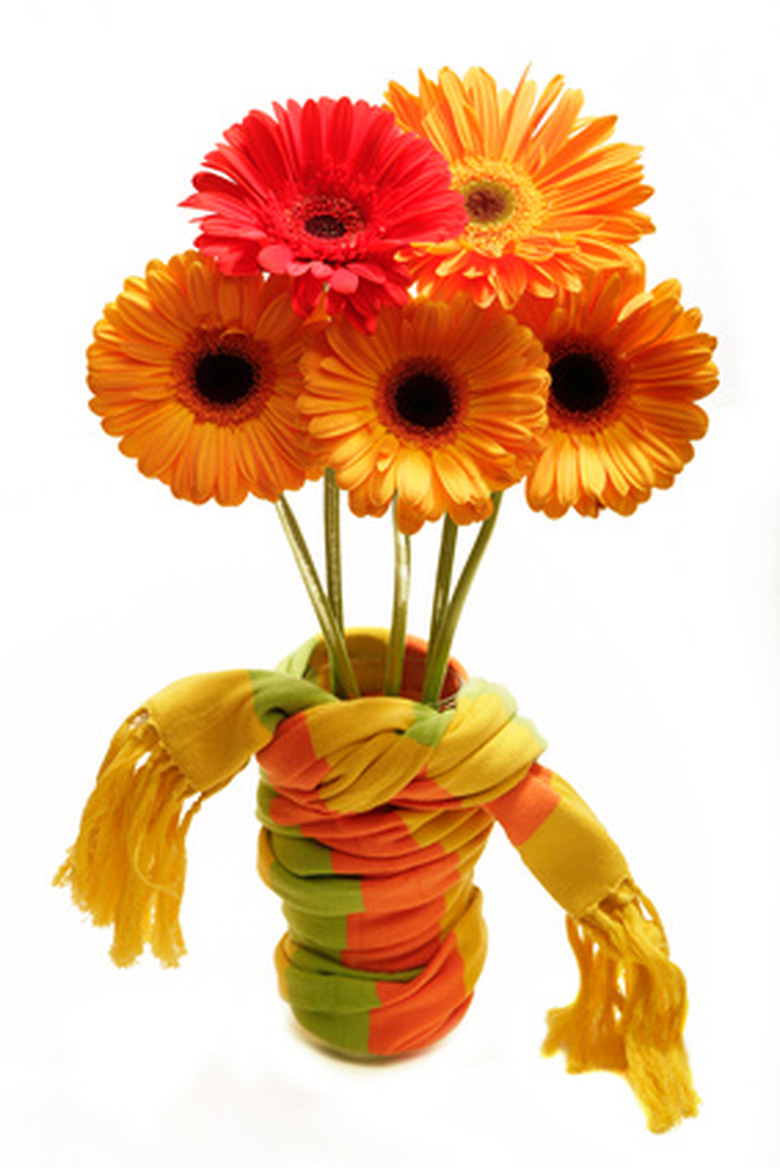The Best Indoor Plants For Oxygen
The best houseplants for releasing oxygen are plants that are placed in areas indoors that match their light requirements, according to Nan Hampton from the Lady Bird Johnson Wildflower Center. This ensures that they are capable of carrying out the process of oxygen through photosynthesis efficiently. However, some plants will also remove toxins such as benzene and formaldehyde from the air, which means they also act as air filters for the oxygen in your home.
High Light Plants
Plants with a high light requirement need some direct sunlight each day. They should be placed within four feet of a window with a southern exposure. Chrysanthemums are good for removing trichloroethylene, carbon monoxide, and benzene. They need to be in a room that stays above 55 degrees at night and they need to be kept evenly moist. Gerbera daisies are good for removing benzene and formaldehyde. It needs a slightly moist soil and lots of bright light to flower.
- The best houseplants for releasing oxygen are plants that are placed in areas indoors that match their light requirements, according to Nan Hampton from the Lady Bird Johnson Wildflower Center.
High to Medium Light Plants
Plants with a high to medium light requirement needs lots of bright light and will tolerate some direct light. They should be about four feet from a window with either a western or eastern exposure. Areca palms tend to release a lot of humidity according to greenacy.org. They need lots of water and should not be allowed to dry out. English ivy is good for removing benzene and carbon monoxide from a room. It requires constant moisture and slightly cool conditions to thrive.
Medium Light Plants
Plants with a medium light requirement should not receive any direct sunlight. They should be placed between four to ten feet of a window that faces east or west or directly next to a northern facing window. The snake plant or mother-in-law's tongue is one of the few plants that give off oxygen at night, rather than during the day. So, it is an excellent plant to place in your bedroom. It is also good for removing formaldehyde, carbon monoxide and benzene from the air. It is easy to grow and will tolerate almost any conditions except over-watering. The spider plant is also good for removing formaldehyde and carbon monoxide. It should be kept evenly moist and will tolerate cold rooms, down to 50 degrees at night.
- Plants with a high to medium light requirement needs lots of bright light and will tolerate some direct light.
- The snake plant or mother-in-law's tongue is one of the few plants that give off oxygen at night, rather than during the day.
Medium to Low Light Plants
Some plants will do well in either medium or low light. This means they should be placed several feet away from windows and receive no direct sunlight. The peace lily is good for removing trichloroethylene, carbon monoxide and formaldehyde. Although it will tolerate low lights, it requires medium light to flower and should not be allowed to dry out. Several species of dracaena are good for removing benzene, formaldehyde, trichloroethylene and carbon monoxide including the red edged dragon (dracaena) tree, Janet Craig dracaena and Warneck dracaena. Dracaenas need warm conditions and constant moisture.
Low Light Plants
Plants with low light requirements need to be placed away from windows–at least 10 feet away from all windows except obstructed northern ones. The bamboo or reed palm will remove benzene, formaldehyde, carbon monoxide and trichloroethylene. It requires uniform moisture but can be allowed to dry out slightly on occasion. Plants that are good for removing formaldehyde and carbon monoxide in low light include the golden pothos and the heartleaf philodendron. Both are easy to grow and need infrequent watering.
- Some plants will do well in either medium or low light.
- Plants that are good for removing formaldehyde and carbon monoxide in low light include the golden pothos and the heartleaf philodendron.
References
- Lady Bird Johnson Wildflower Center: Ask Mr. Smarty Plants; Nan Hampton.
- Environmental Resource Institute: House Plants as Air Purifiers: Plants Absorb Formaldehyde, Benzene and Other Toxic Chemicals.
- The New York Botanical Gardens: Clean Air with an Indoor Victory Garden
- University of Missouri: Lighting Indoor Houseplants; David Trinklein.
